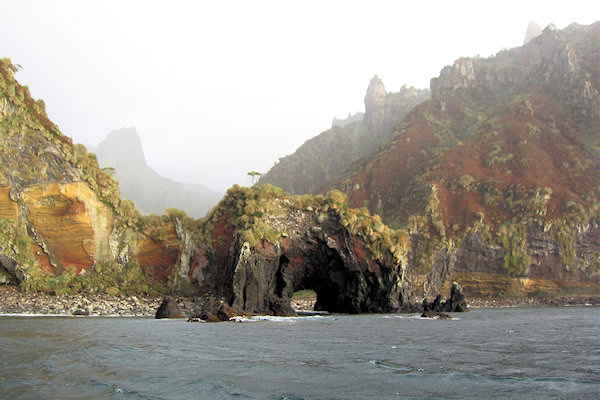Mid Atlantic Islands
Things to DO
Gough Island

Sub-Antarctic Fur Seal and Southern Elephant Seal are the only two native breeding mammals.
The chief threat to the wildlife is from introduced species, hence the severe restriction on landing here.
The House Mouse, which is larger here then anywhere else, has developed the habit of attacking and
eating alive the chicks.
When we arrived at Gough Island the scene could not have been less promising for a zodiac cruise. The air
was filled with sea spray, blown around by 50 knot winds.
By the time the ship went around the southern corner of the island the scene was transformed. The sea was very
calm so the boats were launched and off we went to explore! Although blasts of wind frequently tore across the
sea, wetting everybody and everything, the morning’s expedition proved to be an extremely rewarding one.
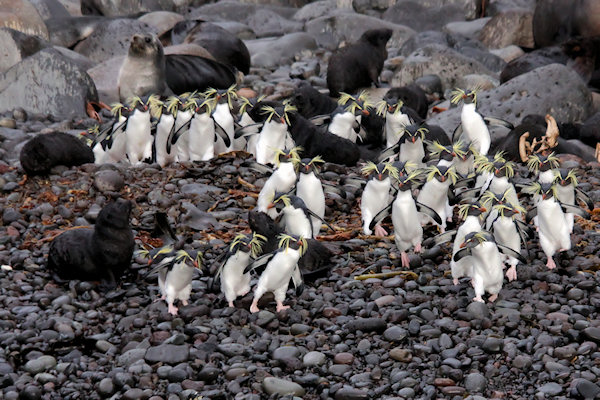 |
|||||
High on everyone’s wish list for this voyage was to see
Northern Rockhopper Penguins in their full
glory. Although the nesting season had finished and many birds were in full moult we soon found lots of birds
with new, crazy-looking crests. Some of them were assembling to enter the sea.
The birders’ attention was very much focused on the spaces between the tussock because that was where it was
most likely to spot a Gough Gallinule and the Gough Finch
And we did find them !
Tristan da Cuhna

Tristan da Cunha is a remote volcanic group of islands in the South Atlantic Ocean and the main island of
that group. It is the most remote inhabited archipelago in the world, lying 2,816 kilometres from the
nearest land, South Africa, and 3,360 kilometres from South America.
The territory consists of the main island of Tristan da Cunha itself, which measures about 11.27
kilometres across, along with the uninhabited Nightingale Island and the wildlife reserves of
Inaccessible Island. It has a permanent population of 275.
Inaccessible Island was named by the modest Captain d'Etchevery - who landed on Tristan and
Nightingcale aboard the royal covette Etoile du Matin in 1778, but on failing to land named this
island "Inaccesible"
Nightingale Island was first named Gebroocken Island by the dutch Nachtglas-expedition
in 1656, and later re-named Nightingcale Island in 1760 by English Captain Gamaliel Nightingcale, and
its satellites Middle Island and Stoltenhoff Island, are much-eroded remnants of a larger island
over 18 million years old.
Shipwreck Disaster
March 2011
 |
|||||
The MS Oliva ran aground on Nightingale Island, on March 16, 2011. All 22 crew were rescued
before the ship broke up and leaked oil into the sea. The freighter (length 225 m, beam 32m) was shipping
soya beans (75,300 ton's) from Rio de Janeiro to Singapore. It's also carrying 1,650 tons of heavy crude oil.
Nightingale Island is regarded as one of the world’s most important wildlife habitats.
Conservation groups said the wreck could pose a different ecological threat to the chain as rats could
have come ashore from the vessel. Several islands in the archipelago are rodent-free, and a rat infestation
could potentially do more harm to bird life than any oiling, experts said.
There are species of albatross, petrels and shearwaters that nest on these islands. However, all of the
reports of oiled birds have been about the penguins. The likely reason for this is that many of the
flighted bird species fly out to sea before landing on water, thereby avoiding the oil along the coastline.
Since the penguins are not flighted, they have to swim through it to get to the islands, making them the most
vulnerable and highly impacted.
The island is home to 40% of the world’s population of Northern Rockhopper Penguins. (Totale about
100.000 pairs) Relucktenly Penguins have finished their breeding cycle and most adults have also left the
island after their annual moulting ashore. So birds would not be expected to be coming ashore at this time of
year when it would be usual only to see adults leaving with their new feathers.
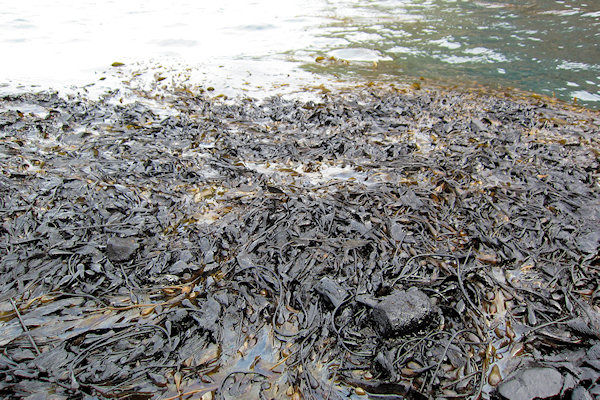 |
|||||
The islands' remoteness was complicating clean-up efforts. Tristan da Cunha is usually accessible only by
boats that sail nine times a year from Cape Town. Nightingale Island has no fresh water, so the penguins will
have to be transported to the main island for cleaning.
An oiled penguin rehabilitation team has been formed and transported to the Tristan da Cuhna. It has
been put together by the SANCCOB Foundation (Foundation for the Conservation of Coastal Birds) which is
an internationally recognised leader in seabird rehabilitation with much experience of successfully cleaning
oiled African Penguins in sometimes very large numbers.
The Russian Research/Antarctic supply vessel ‘Ivan Papanin’ arrived on 12th April. It is the fourth
vessel chartered by the owners of the MS Oliva and their insurers since the incident, following after the
‘Edinburgh’, ‘Smit Amandla’ and the ‘Svitzer Singapore'.
The ‘Ivan Papanin’ carried the balance of the SANCCOB supplies and oil abatement equipment that was not able
to be collected prior to the departure of the third vessel, the ‘Svitzer Singapore’ on 29th March. She also
carries a Bell-212 helicopter, which will greatly improve the deployment of the oil abatement teams and
equipment into the oiled gulleys and bays on Middle Island, the focus of the clean-up efforts.
Reconciliation of penguin numbers has been tricky as some returned to sea earlier have returned. Nevertheless
this immense and unique project to save the lives of as many penguins as possible has drawn to a close with a
total of 381 of the original 3.718 birds safely returned so sea. So the survival rate was about 10%.
Tristan da Cuhna
 |
|||||
From the 1870s, the economy of Tristan gradually switched from trading to subsistence crofting.
Then the already struggling community was dealt two blows in the 1880s. First, rats arrived from a
shipwreck in 1882. They multiplied rapidly, causing extensive damage to crops and native bird populations.
Then in 1885, a boat with 15 men aboard was lost after it put to sea to trade with a passing ship. Many
islanders left to settle in South Africa and New England, and the population fell by almost half to only
50 people.
Tristan's isolation was greatest during the early 20th century, when there was often more than a year
between ships.
After the Second World War, commercial fishing for rock lobster started in 1949 and an expatriate
Administrator was appointed.
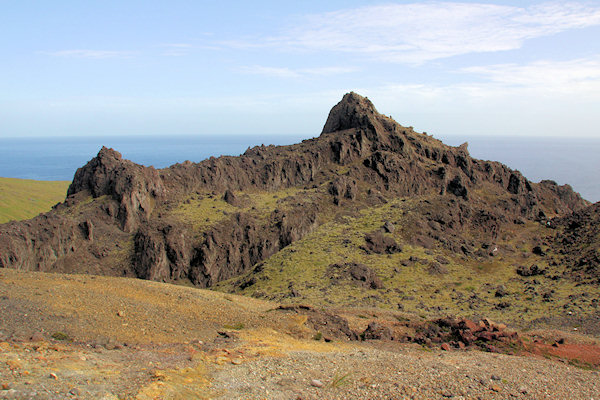 |
|||||
The island community was rudely thrust into the limelight in 1961, when a volcanic eruption right next
to the settlement caused the entire community to flee to Nightingale and then on to the United Kingdom. For
most islanders it was their firts time off Tristan, and many longed to return.
After intensive lobbying, an advance party went back to the island in 1962, and most of the rest of the
community returned towards the end of 1963.
A harbour was built to compensate for the loss of the main landing beach under the new lava flow.
Edinburgh of the Seven Seas is the home to all resdent islanders, all descended from original settlers:
William Glass (1816 Scotland), Thomas Swain (1826 England), Peter Green (1836 Holland), Thomas Rogers
(1836 US), Andrew Hagan (1849 US), Andrea Repetto (1892 Italy), Lavarello (Gaetano 1892 Italy). All are buried
in the island cemetery.
The only public place available is the Prince Philip Hall which occasionally serves food, the
building also houses the Albatross Bar - the islands only pub.
 |
|||||
Part of the charm of Tristan is wandering around in the village, with it's small museum and gift shop;
two churches, supermarket, post office, pup and swimming pool.
It's recommended that visitors include both churches on their itinery: St Mary's has many historical
artefacts including wood and a bell gleaned from shipwrecks; St Joseph's has a stunning stained-glass
window depicting a Tristan longboat framed against the island.
Outside the village, visitors are free to explore the settlement plain. There is a bus to the Potato
Patches; the place where every family plants, tends and harvests the food which forms there staple diet
and fodder for livestock.
Trips away from the settlement Plain must be led by a guide. A hike to The Base needs a steep climb
of about 600 meters. The base offers extensive tracts of natural vegatation as well as breeding
Yellow-nosed Albatrosses, Gough Moorhen and small numbers of Tristan Thrushes, mainly
in the deeper gulches.
Inaccessible Island
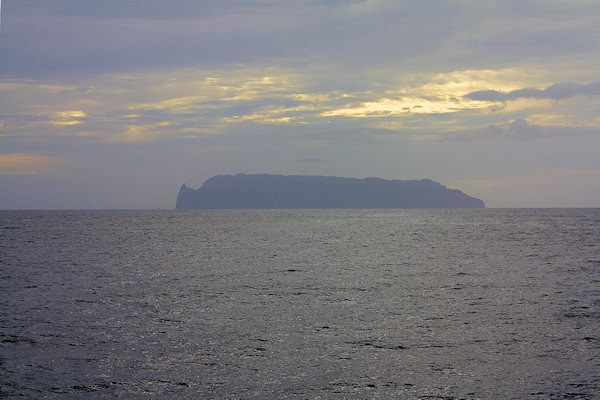 |
|||||
Inaccessible Island is an extinct shield volcano, some 6 million years old, lying 45 km to the west of
Tristan.
It is a World Heritage Site and Nature Reserve; visits to the island are very restricte and not normally
possible to visitors. The island is a high plateau surrounded by steep cliffs up to 300m high.
Inaccessible Island is home to the world's smallets flightless bird, Inaccessible Island Rail,
as well as one of the world's largest flying birds, the Tristan Albatross.
Other birds species of interest are the Atlantic Yellow-nosed Albatross and the Scooty
Albatros. Inaccesible is also home to thousands of other petrels, especially Great Sheawater and
the endemic and clearly identifiable Spectacled Petrel.
Around the coasts, there are colonies of Northern Rockhopper Penguin's, especially along the nortwest
coast, as well as Sub-Antarctic Fur Seal's and Southern Elephant Seal's
Along the coast you can find the Tristan Trush, which appears to live in family groups and is very
curios, often congregating around visitors.
Nightingale Island
 |
|||||
Nightingale, lying some 38 km to the southwest of Tristan, is the third island of the Tristan
group. the coast is rugged and consists largely of cliffs. There are two smaller offshore islands,
Stoltenhoff and Middle Island
Nightingale is largely covered with a tall, coarse, tussock grass, which grows up to 3m in height and makes
exellent cover for the large colonies of seabirds found on the island.
In the centre of the island, which is reached by a broad path cut through the tussock, there are four ponds.
On the cliffs around the island, you will find small colonies of Antarctic Tern and Atlantic
Yellow-nosed Albatros
